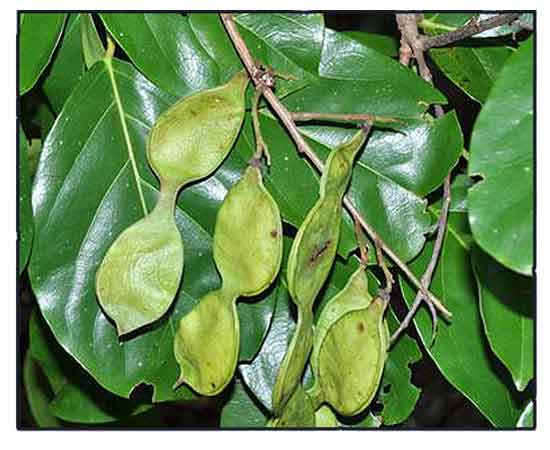
Family • Fabaceae
Asi-asiman
Aganope heptaphylla (L.) Polhill
BALAY-LAMOK
| Scientific names | Common names |
| Aganope heptaphylla (L.) Polhill | Agnaya (Mindoro) |
| Aspalathus arborea Lour. | Asi-asiman (Tagalog) |
| Deguelia heptaphylla (L.) S.F.Blake | Balay-lamok (Ilokano) |
| Deguelia macroloba (Miq.) Taub. | Baliotos (Bisaya) |
| Deguelia sinuata (Benth. ex Thwaites) Taub. | Sibalao (Or. Mindoro) |
| Derris diadelpha (Blanco) Merr. | |
| Derris floribunda Naves ex Fern.-Vill. | |
| Derris heptaphylla (L.) Merr. | |
| Derris macroloba Miq. | |
| Derris sinuata Benth. ex Thwaites | |
| Pongamia grandifolia Graham | |
| Pongamia sinuata Wall. | |
| Ptericaroys diadelohus Blan co | |
| Ptericaroys grandifolius Kuntze | |
| Ptericaroys macrolobus (Miq.) Kuntze | |
| Semetor arborea (Lour.) Raf. | |
| Sophora tiloebsis Blume ex Miq. | |
| Salacca zalacca (Gaertn.) Voss is an accepted name. KEW: Plants of the World Online | |
| Other vernacular names |
| BRUNEI: Akar kemedu raung. |
| INDONESIA: Tali berkumpul, Wali anuhun, Belulu. |
| MALAYSIA: Omis-omis, Wali ahuhun, Ketui besar, Pepanjat. |
| PAPUA NEW GUINEA: Waikahiri. |
August 2023
![]()
 |
| PHOTOS / ILLUSTRATIONS |
| IMAGE SOURCE: Photos (2): Aganope heptaphylla / Leaves and fruits / Yotsawate / CC BY-NC / click on image or link to go to source page / Derris-like plants of Thailand |
Additional
Sources and Suggested Readings |
• |
DOI: It is not uncommon for links on studies/sources to change. Copying and pasting the information on the search window or using the DOI (if available) will often redirect to the new link page. (Citing and Using a (DOI) Digital Object Identifier) |
| List of Understudied Philippine Medicinal Plants |
• |
 |



